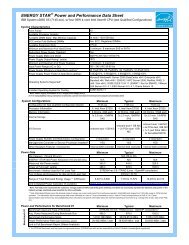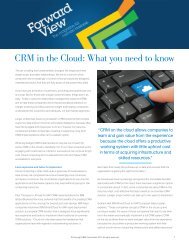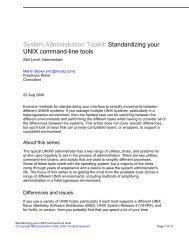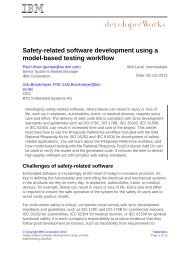Virtual Worlds, Real Leaders: - IBM
Virtual Worlds, Real Leaders: - IBM
Virtual Worlds, Real Leaders: - IBM
Create successful ePaper yourself
Turn your PDF publications into a flip-book with our unique Google optimized e-Paper software.
Psychologists and sociologists are already conducting<br />
research in virtual worlds in an effort to better understand<br />
human nature. That is why <strong>IBM</strong> is applying the lessons<br />
it has learned from online games to its own business and<br />
providing related solutions to interested organizations.<br />
And there are a number of basic lessons we have learned<br />
from our early efforts.<br />
For example, from an organizational perspective, breaking<br />
major operations into smaller projects and assigning<br />
leadership for those projects based on expertise allows for<br />
more employees to try their hand at leadership. It also<br />
allows for more temporary roles that can frequently shift<br />
based on who is performing. As a result, employees that<br />
are simultaneously leading in one project and following in<br />
another will develop a more complete understanding of<br />
effective leadership.<br />
Smaller projects also allow for more failure, and the<br />
ability to tackle big problems in an iterative fashion.<br />
Encouraging employees to make mistakes has its obvious<br />
drawbacks, but instilling the confi dence to try new things<br />
has benefi ts that far outweigh the risks. Breaking projects<br />
up into bite-size pieces makes failure more palatable, and<br />
more affordable.<br />
From a technology perspective, giving leaders tools to<br />
make effective decisions is nothing new. But in the last<br />
ten years, business performance management software and<br />
business intelligence software has taken a quantum leap<br />
forward, providing real-time statistical analysis of a business<br />
directly to an executive’s desktop. But there is still work<br />
to be done as business intelligence works its way deeper<br />
into the enterprise. And it is critical to deliver the right<br />
information to the right people, because too much or too<br />
little data can result in major ineffi ciencies.<br />
GIO 2.0 Report<br />
31

















